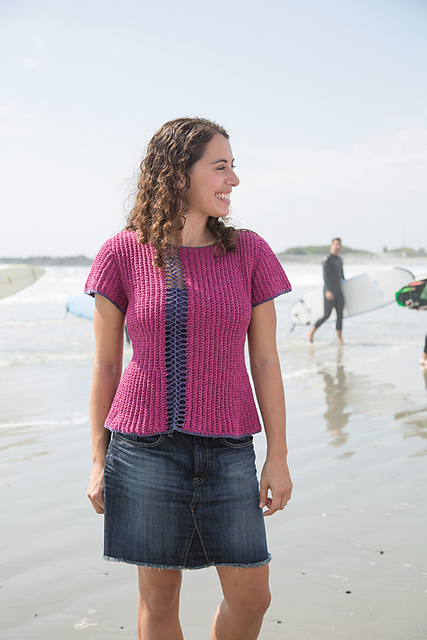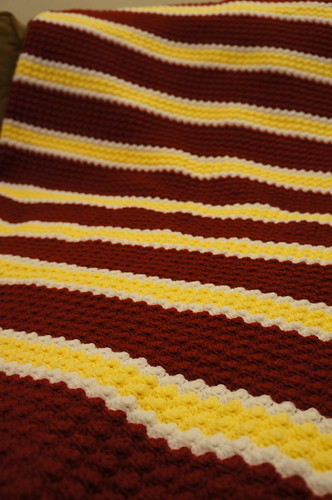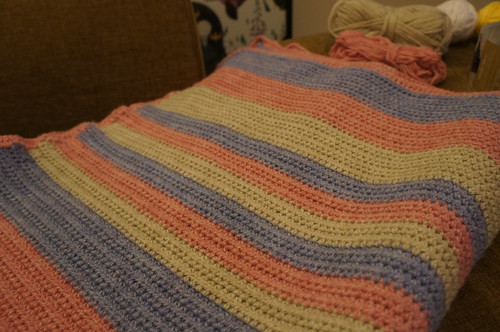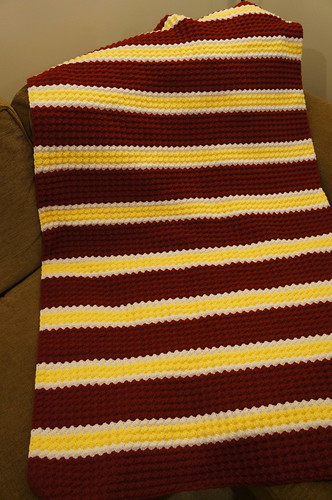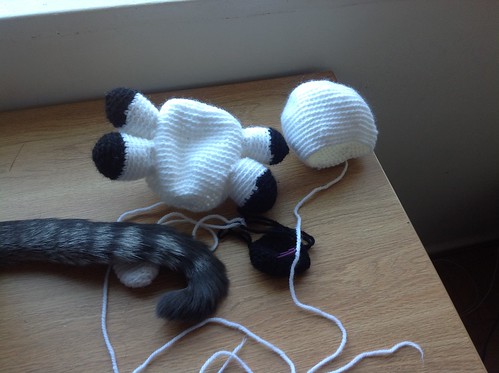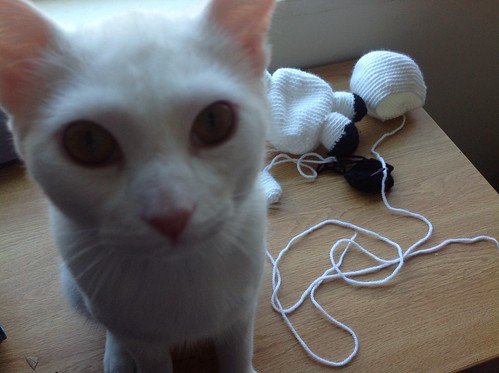 Newport
Newport
by Jennifer Crowley
Published in: Classic Elite #9213, Surf’s Up
Craft: Crochet
Category: Sweater → Pullover
Published: February 2013
Yarns suggested: Classic Elite Yarns Classic Silk
Yarn weight: DK / 8 ply (11 wpi)
Gauge: 16 stitches and 8 rows = 4 inches in Sc-blo with larger hook
Hook size: 3.5 mm (E), 4.0 mm (G)
Yardage: 945 – 1485 yards (864 – 1358 m)
Sizes available: S (M, L, XL, 2XL, 3XL)
Finished Measurements: 36¼ (38¼, 40¾, 43¾, 45¼, 47¾)”
Yarn Requirements: 6934 Plum MC 6 (7, 7, 8, 9, 10) balls, 6910 Soft Violet 1 ball
This pattern is available for instant download for $6 through Ravelry
You can also buy it on the Classic Elite Website.
It is also part of the pattern booklet #9213, Surf’s Up, by Classic Elite Yarns. You can buy it in print at your local yarn store.
Debating if this pattern is for you? Got questions? This is the place to ask them. Over the next few days I’ll be talking about the design process for Newport, including a great story about when I first saw the shots of the sample on the model.
 |
| See the Pretty? |

